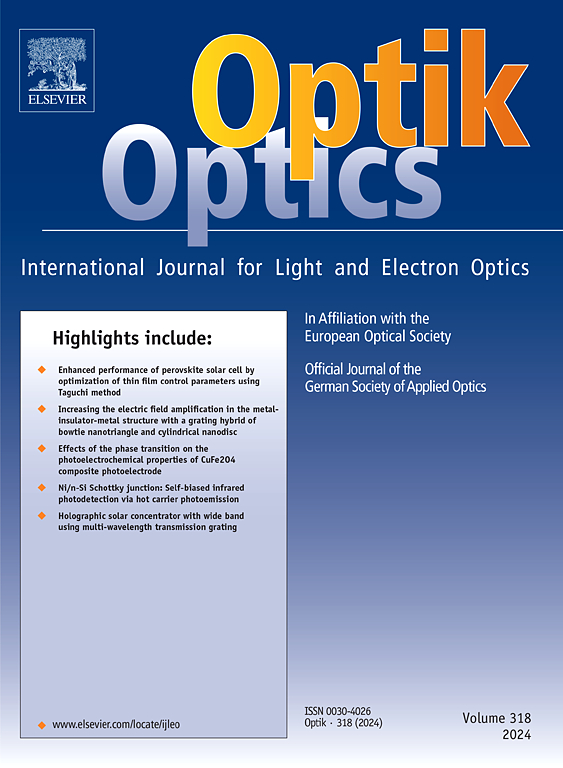Transparent frequency selective surfaces with high optical transparency and wide bandwidth for 5 G mm-wave spatial filtering applications
IF 3.1
3区 物理与天体物理
Q2 Engineering
引用次数: 0
Abstract
This study presents a design method for a transparent frequency-selective surface (FSS) that combines high optical transparency (OT), enhanced frequency selectivity, and broad bandwidth (BW) performance, specifically for 5 G millimeter-wave spatial filtering applications. Transparent FSSs are designed to function as spatial filters in electromagnetic environments where visibility is required—such as on building windows, vehicle glass, drone surfaces, and radomes. However, most existing research has concentrated on lower frequency bands (e.g., S-band and X-band), with relatively little attention paid to the mm-wave range (K and Ka bands), which is essential for next-generation 5 G communications. To address this gap, a double-layer FSS (D-FSS) is proposed, composed of two spatially separated single-layer FSSs (S-FSSs). This configuration substantially improves frequency selectivity and achieves a wide fractional bandwidth of 23.1 %, spanning 24.5–30.9 GHz—covering the n257 and n258 bands used in 5 G mm-wave systems. Each S-FSS consists of narrow, symmetrically arranged metallic lines that provide both excellent optical transparency—84 % for the S-FSS and 70 % for the D-FSS—and strong angular stability. The proposed FSS structures demonstrate significant potential for improving signal coverage and transmission bandwidth in a variety of 5 G mm-wave applications.
具有高光学透明度和宽带宽的透明频率选择表面,用于5 G毫米波空间滤波应用
本研究提出了一种透明频率选择表面(FSS)的设计方法,它结合了高光学透明度(OT)、增强的频率选择性和宽带(BW)性能,特别适用于5 G毫米波空间滤波应用。透明fss被设计成在需要能见度的电磁环境中充当空间过滤器,例如建筑物窗户、车辆玻璃、无人机表面和天线罩。然而,大多数现有研究都集中在较低的频段(例如s波段和x波段),相对较少关注毫米波范围(K和Ka波段),这对于下一代5 G通信至关重要。为了解决这一差距,提出了一种双层FSS (D-FSS),由两个空间分离的单层FSS (s -FSS)组成。这种配置大大提高了频率选择性,并实现了23.1 %的宽分数带宽,跨越24.5-30.9 ghz,覆盖了5 G毫米波系统中使用的n257和n258频段。每个S-FSS都由狭窄的、对称排列的金属线组成,这些金属线提供了出色的光学透明度(S-FSS为84% %,d - fss为70% %)和强大的角稳定性。所提出的FSS结构在各种5 G毫米波应用中显示出改善信号覆盖和传输带宽的巨大潜力。
本文章由计算机程序翻译,如有差异,请以英文原文为准。
求助全文
约1分钟内获得全文
求助全文
来源期刊

Optik
物理-光学
CiteScore
6.90
自引率
12.90%
发文量
1471
审稿时长
46 days
期刊介绍:
Optik publishes articles on all subjects related to light and electron optics and offers a survey on the state of research and technical development within the following fields:
Optics:
-Optics design, geometrical and beam optics, wave optics-
Optical and micro-optical components, diffractive optics, devices and systems-
Photoelectric and optoelectronic devices-
Optical properties of materials, nonlinear optics, wave propagation and transmission in homogeneous and inhomogeneous materials-
Information optics, image formation and processing, holographic techniques, microscopes and spectrometer techniques, and image analysis-
Optical testing and measuring techniques-
Optical communication and computing-
Physiological optics-
As well as other related topics.
 求助内容:
求助内容: 应助结果提醒方式:
应助结果提醒方式:


